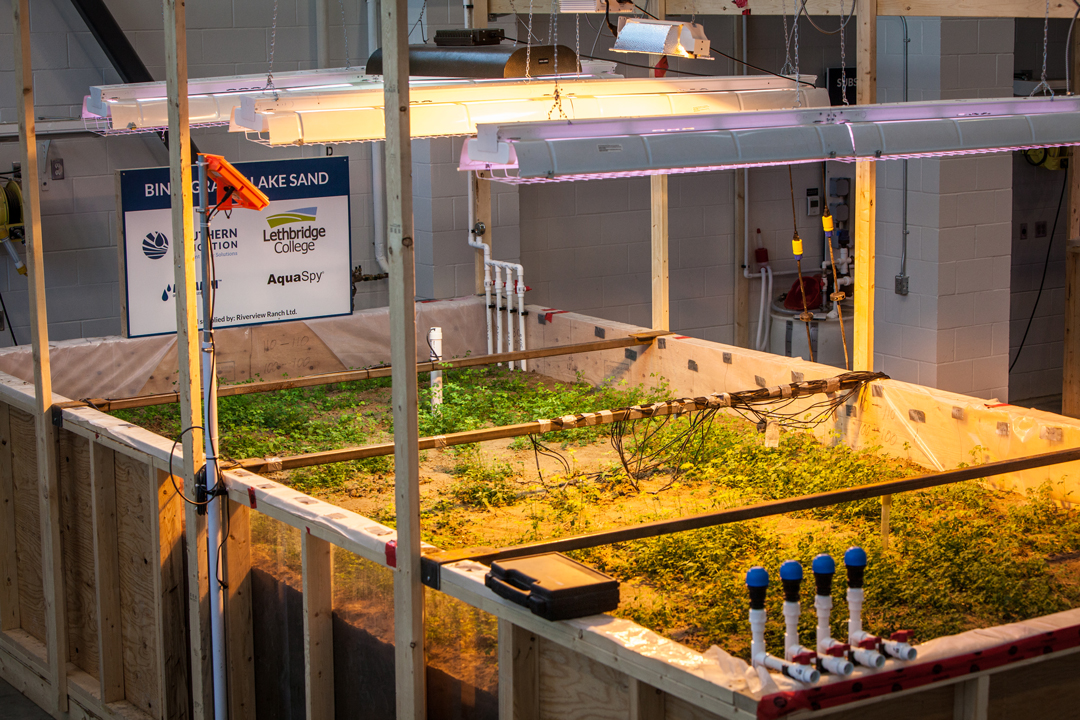AI ADVANCEMENT
BY TAMARA LEIGH
Knowing what weeds, insects and diseases are in the field and how to treat them is an important part of proactive management. As well, combatting chemical resistance in weeds is a growing necessity, but effective scouting takes time. The xarvio Scouting app provides farmers and agronomists a tool to identify these risk factors early and track their progress by simply snapping smartphone pictures.
“What we’ve done is build a database of images and trained artificial intelligence (AI) algorithms to identify the specific weed, disease or leaf damage from a picture almost instantly,” said Warren Bills, business development officer with xarvio Digital Farm Solutions.
The use of AI is an evolution from scouting apps that require users to scroll through drop-down menus based on factors such as leaf or stem shape. Based on photos, the app can identify weeds, but also damage patterns on plants that indicate the presence of insects or disease.
The app is available as a free download on Android or Apple devices. Registration is simple, and key features include weed, disease and leaf-damage identification. An optional feature allows users to view local trends and receive alerts. Scouting reports are saved, so findings can be tracked over time.
Available in 20 countries, the app draws upon a global image database. This is helpful in an increasingly complex growing environment. Farmers are finding pests and diseases in new places, and with farm labour becoming increasingly international, people don’t always know the local plants.
Ivan Izgagin is a precision agronomist at Cavalier Agrow in northwest Saskatchewan. He immigrated to Canada from Russia eight years ago and uses the app. “I’m an immigrant, and with that, there are weeds I don’t know much about. The app allowed me to recognize those weeds quicker,” said Izgagin.
He noted weed species can be different from field to field and farm to farm. “We have a fast-paced environment during the growing season. It can be time consuming to identify new weeds and we don’t want to lose that time,” he said.”
Izgagin is impressed with the app’s continuous improvement and responsiveness. “I think it’s a great communication between the agronomist and the farmer. Farmers spend lots of time in the field, and the app makes it easy to recognize and capture a picture from the sprayer,” he said. “If you can put a note with the GPS and revisit that spot, it’s a great reference and helps the agronomist make the right recommendations.”
In the fight against chemical resistance, the app uses two major strategies—ensuring weeds and diseases are treated with effective products and connecting its community of users to identify weeds and diseases in their area. The grand vision is to integrate the technology into a larger “smart sprayer” solution that will integrate sensors and software into a single piece of equipment that can identify crop issues and choose which chemicals to spray on the go.
“We want to do the sensing using multiple cameras across the boom, decide what weed is there and, with an injection system, apply product. The only way that happens accurately and properly is if we have good algorithms,” said Bills. He explained the images and data collected by app users help to improve its effectiveness by strengthening these algorithms.
Having secured partnerships with equipment and chemical companies, the project is moving ahead, said Bills. “We are in our second year testing smart spraying in the field. Expect to see this equipment available on the market within five years.”







Comments